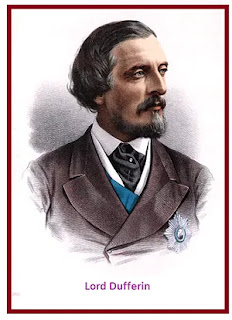 |
| bridge at Bhairongarh across the River Mahi en.wikipedia.org/ |
 |
| Railway bridge across Mahi., MP youtube.com |
The railway bridge across the Mahi river, at Bhairongarh, Madhya Pradesh, near Ratlam, built in 1890.(Photograph: Courtesy Indian Railways) is yet another milestone in the annals of the Indian Railways. It was controlled by the East Indian Railways. A recognized national monument, it was decommissioned in 1997. However, it was not dismantled and saved for the posterity by the IR. Had Jubilee Bridge not escaped from the auctioneer’s hammer we would have lost a wonderful steel bridge that connected us with the past.
From the vintage plaque on this heritage bridge we understand that construction work began in 1882 roughly 14 years after the first great Indian rebellion of 1858-59 had been put down by the startled British with the beginning of direct administration by the Crown in London. The work was completed in 1887, that time happened to be Queen Victoria's Jubilee Year, and the bridge was inaugurated on February 16, 1887 by none other than Earl Dufferin, Viceroy and Governor General, who valued Indian sentiments. Dufferin being a shrewd administrator, believed strongly that in order to rule successfully a large and diverse subcontinent he needed the support of both the natives and Anglo-Indians; but the latter considered him a renegade . Like him, Lord Rippon earned the ire of the Anglo-Indians because the natives liked Rippon very much and trusted him. Dufferin also served as the Governor General of Canada from 1872 to 1878 and got a name, Dufferin respected Indian nationalists and at the same time was in the good book of conservative whites. He was one of history's most successful diplomats - eighth Viceroy of India in 1884, Dufferin named the bridge the Jubilee Bridge.
 |
| Lord Dufferin Gov. Gen. of India. prepp.in |
 |
| Lord Dufferin Gov. Gen. of India.prepp.in |
https://prepp.in/news/e-492-lord-dufferin-1884-1888-modern-india-history-notes
https://en.wikipedia.org/wiki/Frederick_Hamilton-Temple-Blackwood,_1st_Marquess_of_Dufferin_and_Ava










